|

HOME |
ABOUT | INDEX |
NEWS |
FACEBOOK |
CONTACT
TWO SPIRIT
Native |
Tribal | Indigenous
| Aboriginal
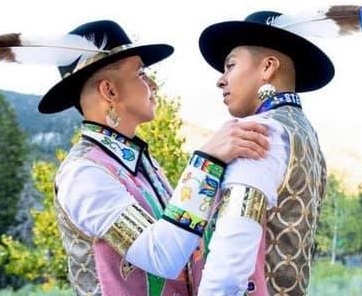

African American|Black
Hispanic|Latinx
Arab|Muslim|Middle East
Asian|Pacific
Indian|Hindu|Sikh
Jewish|Israeli

LGBTQ Indigenous People
Queer Native Pride
LGBTQ
Native Americans are diverse individuals who may
identify with terms like "Two-Spirit," a contemporary
umbrella term for those with diverse gender identities
and roles, or with other tribal-specific terms.
Historically, many Indigenous cultures recognized and
honored a variety of gender identities and sexual
orientations beyond the Western binary, with many
individuals holding unique social, spiritual, and work
roles. The term "Two-Spirit" was coined by Indigenous
people in 1990 as a pan-Indian term to describe these
identities, and many individuals also identify with
terms like gay, lesbian, bisexual, or transgender.
Historical and cultural context
Diverse gender roles: Many pre-colonial Native American
tribes acknowledged identities beyond the male-female
binary. These individuals were often respected and held
specific responsibilities within their communities.
Examples
of roles: Individuals might be assigned male at birth
but live as women, or vice-versa, fulfilling a range of
roles that incorporated aspects of both genders.
Tribal-specific terms: Before the widespread adoption of
"Two-Spirit," many tribes had their own specific words
to describe these gender identities and roles, such as
the Lakota winkte or the Blackfoot
ninauh-oskitsi-pahpyaki ("manly hearted woman").
Two-Spirit: This contemporary term was created by
Indigenous peoples to describe a range of non-binary
gender identities and sexualities, though many
individuals may also use terms from their own tribes or
other contemporary LGBTQ terms.
Modern LGBTQ+ Native Americans
Diversity: Today's LGBTQ Native Americans are diverse in
their tribal affiliations, gender identities, and sexual
orientations.
Statistics: The Williams Institute estimates that there
are over 285,000 American Indian and Alaska Native LGBTQ
adults in the US.
Public
figures: Prominent examples include US Representative
Sharice Davids (Ho-Chunk), artist Scott Wabano, and drag
artist Lady Shug, who are all making significant
contributions in politics, art, and advocacy.
Mental
health: Research from The Trevor Project indicates that
Indigenous LGBTQ youth experience disproportionately
high rates of mental health challenges, such as anxiety
and depression.
What It's Like to Be a
Native Trans Woman on Thanksgiving
Two Spirited Tradition
LGBTQ Indigenous Trailblazers Who are
Making History
Here's What It Means To
Be Two-Spirit According To Native
People
Pride in Pictures: Meet the Two Spirit
Community
Frameline Video: Two Spirit People
Gender Identities Recognized By Cultures
Outside Of The US
Two Spirit Native American Stories
TED Talk: Two Spirit and Gender Fluidity
LGBTQ Native
Americans
"Two
Spirit" is an aboriginal phrase (a direct translation of
the Ojibwe term Niizh manidoowag) that refers to both
masculine and feminine spirits simultaneously living in
the same body. It is a term used by the native,
indigenous, or aboriginal lesbian, gay, bisexual,
transgender, and queer community.
Within the various native or aboriginal populations,
including American Indians (Cherokee, Navajo, Mohican,
Iroquois, Mohawk, Creek, Sioux, Apache, Chippewa,
Shawnee, Chickasaw, Seminole), Canadian Indian (First
Nations), Alaskan Native (Eskimo, Inuit, Aleut), and others, LGBTQ individuals
often have difficulty overcoming the cultural taboos
against homosexual behavior.
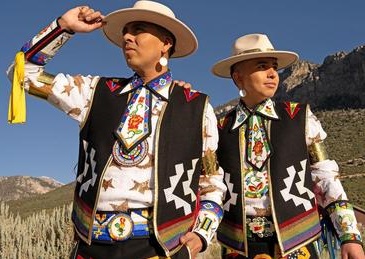
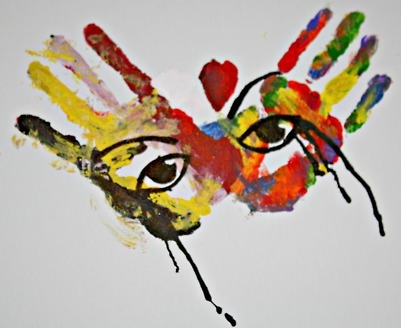
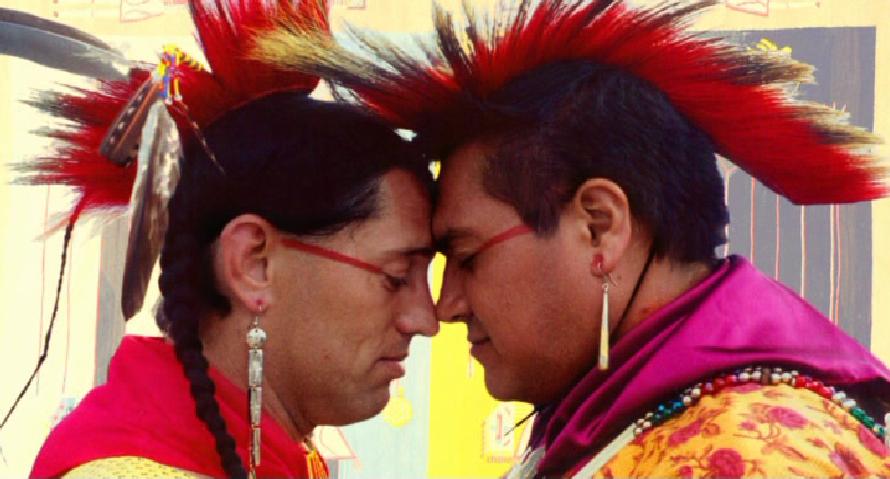
Devery Jacobs Didn't Have the Option to be in the Closet
Lily Gladstone: First Native American
Woman Nominated for Best Actress
What This Two-Spirit Couple Can Teach Us About Our
Queerness
Explaining Two-Spirit
Documentary Film: Two
Spirits
What It's Like to Be a Native Trans Woman
on Thanksgiving
Dancing to Eagle Spirit Society
Barbara May
Cameron: Legendary Lesbian Native American Activist
Saving Two Spirit and Indigenous LGBTQ
Youth
Mending the Rainbow: Working with Two Spirit Communities
Video: What Does Two Spirit Mean?
Aikāne: Universal Queer Love Story Rooted
In Native Hawaiian Tradition
Native
people whose gender identify differs are often subject
to shaming, a form of social censorship within the
tribal community. Shame is rendered for inappropriate
social behavior, particularly any personal expression
for flamboyant dress, mannerisms and especially
effeminate behavior among males. Likewise, shame is
given any female whose overt masculine behaviors
demonstrate her toughness. In short, tolerance in a
contemporary Indian community over the years has evolved
to allow no alternatives for a male or female Indian
identity. Doing so would be considered to bring shame
not just on the individual but also negative attention
to their family.
As a result of tribal community pressures, young people
who have a different sexual orientation often grow up in
a closeted existence or actual isolation. This imposed
isolation is self-destructive and limits individuals
from living to their fullest potential. In a school
environment, many of these young people are subjected to
bullying and harassment from their classmates. In this
atmosphere, support is generally unavailable and creates
an unsafe environment within the school. Nonetheless,
there are exceptional gay students who somehow endure
and who are accepted as equals by their peers. However,
the majority of gay students exhibit behaviors such as
skipping school, which affects their academic
performance, or simply will become a run away from both
home and school.
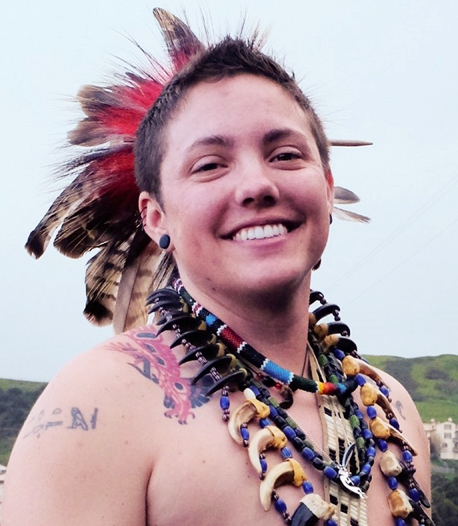
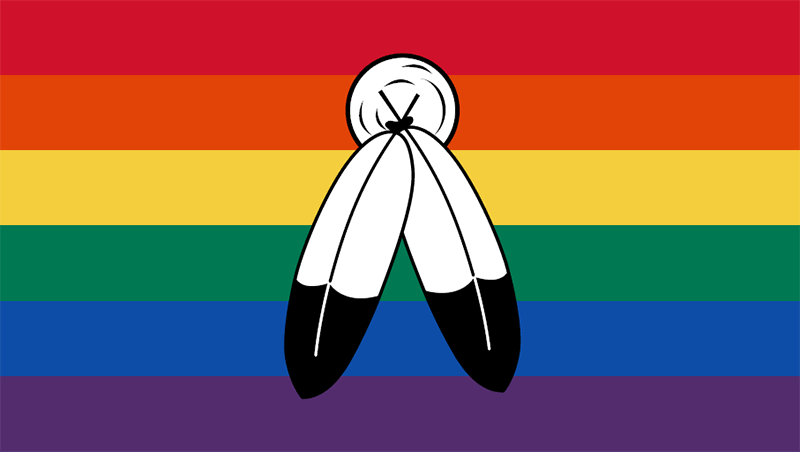
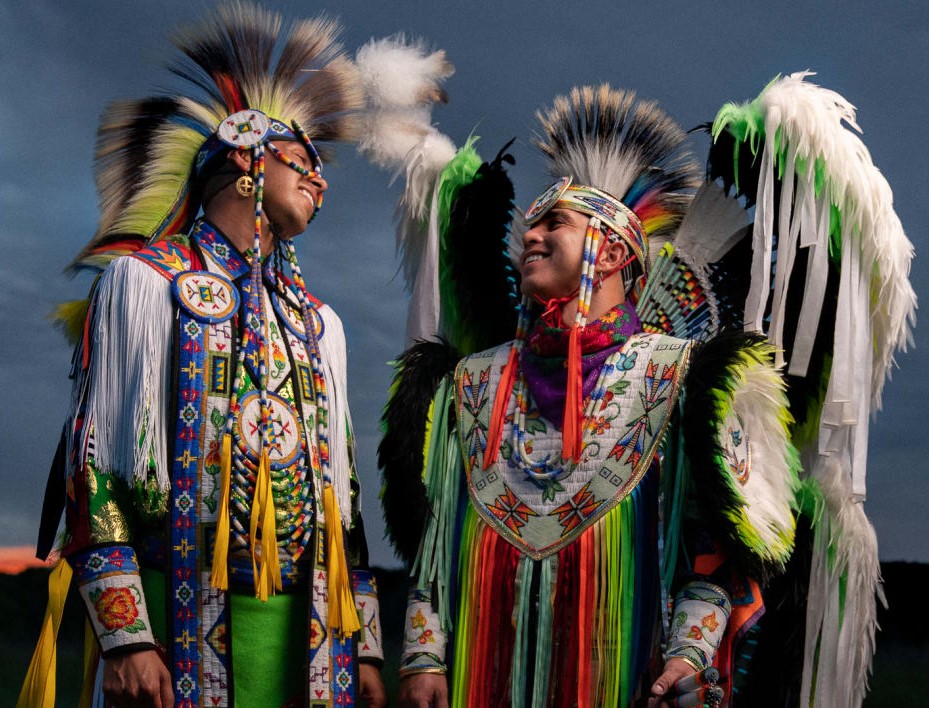
Lily Gladstone Talks She/They Pronouns and
Gender-Inclusive Award Categories
Here's What It Means To
Be Two-Spirit According To Native
People
Wikipedia: Two Spirit
Video: What Does Two Spirit Mean?
Sweetheart Dancers
What It's Like to Be a
Native Trans Woman on Thanksgiving
Two Spirited Tradition
Pride in Pictures: Meet the Two Spirit
Community
Frameline Video: Two Spirit People
Celebrate Indigenous
Power With Our Playlist of Queer Artists
Two Spirit Native American Stories
TED Talk: Two Spirit and Gender Fluidity
For Native
LGBTQ people who seek life in a city for anonymity, the
experience can be far more negative than staying within
their home community. Like most natives reared in a
tribal community, Native LGBTQ people retain pride in
their identity, where they are from and who are their
relatives. Living in a city can unfortunately give a
sense of alienation that is both physical and emotional.
Native LGBTQ individuals often grieve their separation
from family and community when they are unaccepted in a
city because of their lifestyle as well as being a
Native. This experience results in a double
discrimination for Native LGBTQ people instead of the
desired anonymity.
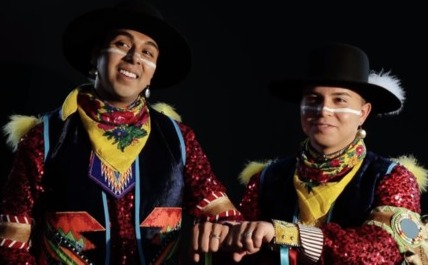
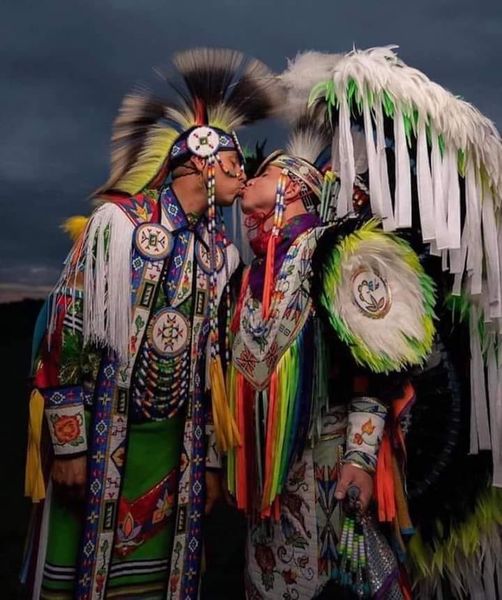
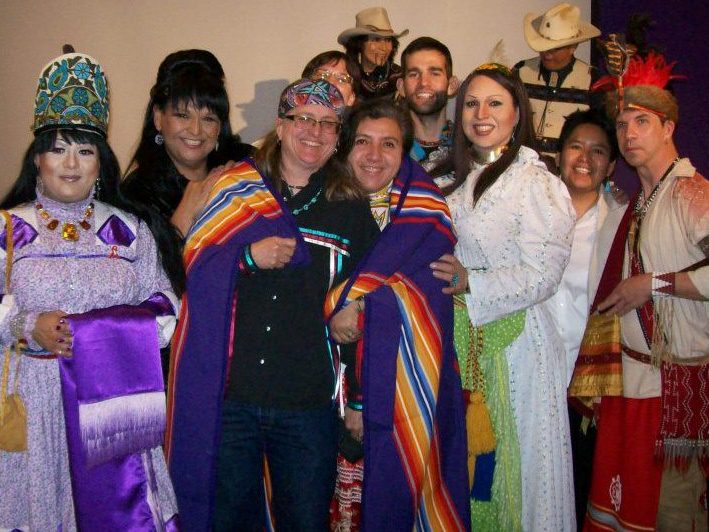
Devery Jacobs Didn't Have the Option to be in the Closet
What This Two-Spirit Couple Can Teach Us About Our
Queerness
Gender Identities Recognized By Cultures Outside Of The
US
Two-Spirit Heroes Who Paved the Way for
Today's Native LGBTQ Community
Gay Native American Couple Break Barriers with Pow Wow
Dance
Androgyne: Two Spirit
Tradition
Indigenous Tribes of the
United States
LGBTQ History Includes Indigenous
Two-Spirit People
TED Talk: Two Spirit and Gender Fluidity
Here's What It Means To Be Two-Spirit
According To Native People
Two-Spirit/Indigenous LGBTQ Books
Who Are the Two Spirits?
Native Two Spirits
Two-Spirit
People
"Two-Spirit" is an umbrella term sometimes used by
Native American and Canadian First Nation communities to
refer to those who fulfill one of many mixed gender
roles. Two-Spirit people are generally defined as LGBTQ
and gender-variant members of the Native American/First
Nation communities. Many contemporary LGBTQ North
American indigenous or aboriginal people use the term
“Two-Spirit” to maintain cultural continuity with their
traditions.
In many
cultures, some individuals possessed and manifested a
balance of both feminine and masculine energies, making
them inherently sacred people. Third gender roles
historically embodied by Two-Spirit people include
performing work and wearing clothes associated with both
men and women. The presence of two-spirits was a
fundamental institution among most tribal peoples. Male
and female two-spirits have been documented in over 150
tribes, in every region of North America, serving
specific duties, including men fulfilling women’s roles,
women fulfilling men’s roles, and importantly,
Two-Spirit individuals contributing as spiritual
leaders.
Lily Gladstone Talks She/They Pronouns and
Gender-Inclusive Award Categories
Two-Spirit Heroes Who Paved the Way for Today's Native
LGBTQ Community
Native American LGBTQ Info and Resources
Frybread Face and Me:
Navajo Boy Finds His Queerness and His
Culture
LGBTQ Native Americans: Making the World
a Better Place
Two-Spirit Joy (and Pain) Examined in
New Doc 'Being Thunder'
Wikipedia: Two Spirit
Video: What Does Two Spirit Mean?
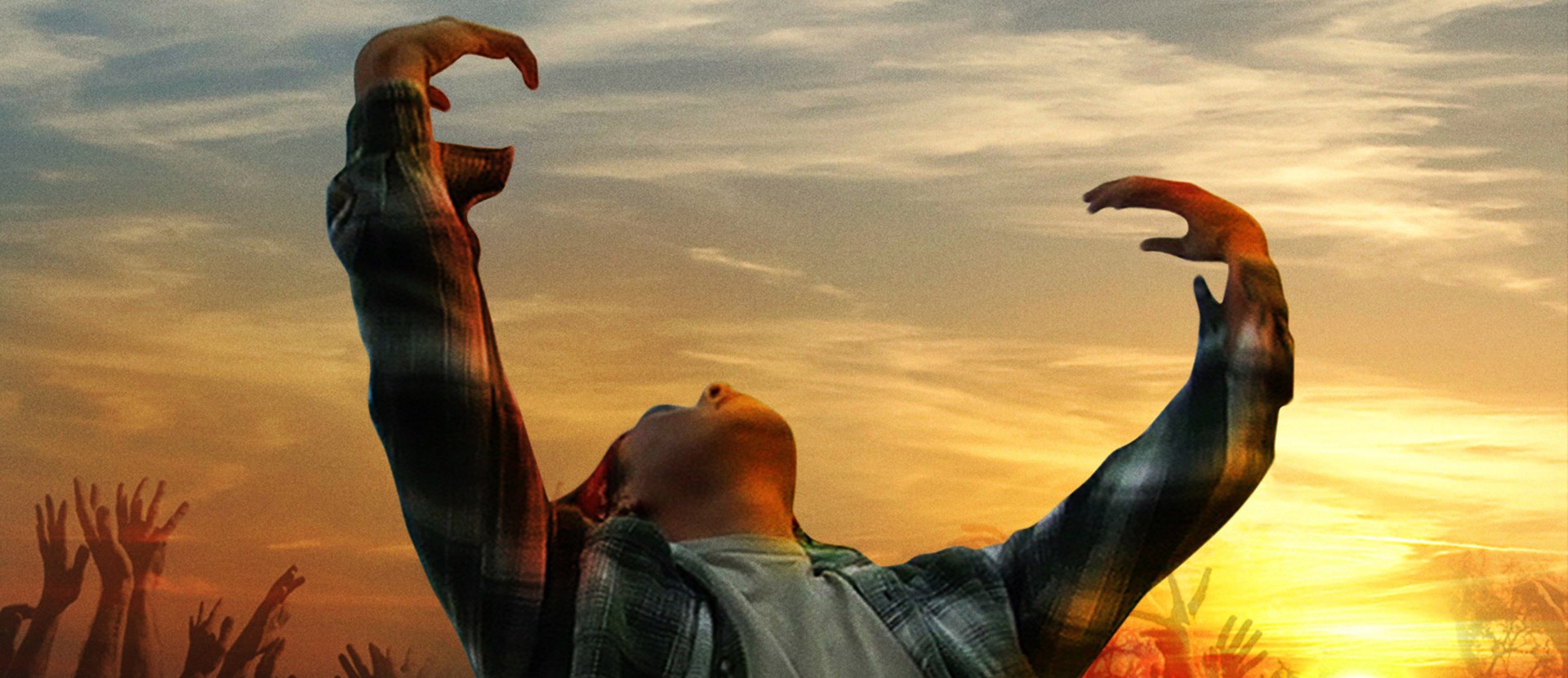
According
to the Navajo, for example, there are four genders:
--Man
--Woman
--Masculine Female-Bodied Nádleeh
--Feminine Male-Bodied Nádleeh
It is documented in academic literature that many
American Indian cultures honored and respected
alternative sexual lifestyles and gender roles, which
the Two-Spirit movement is attempting to recover. A
complex sex/gender system was found in every region of
the continent, among every type of Native culture, from
the small bands of hunters in Alaska to the populous,
hierarchical city-states in Florida. Lesbian, gay,
bisexual, transgender, and queer orientations were
honored and often coincided with healing and shamanic
practices.
Devery Jacobs Didn't Have the Option to be in the Closet
Lily Gladstone: First Native American
Woman Nominated for Best Actress
Two-Spirit Heroes Who Paved the Way for Today's Native
LGBTQ Community
Native American LGBTQ Info and Resources
TED Talk: Two Spirit and Gender Fluidity
Explaining Two-Spirit
What This
Two-Spirit
Couple Can Teach
Us About Our
Queerness
Two Spirited Tradition
Celebrate Indigenous
Power With Our Playlist of Queer Artists
Video: What Does Two Spirit Mean?
Pride in Pictures: Meet the Two Spirit
Community
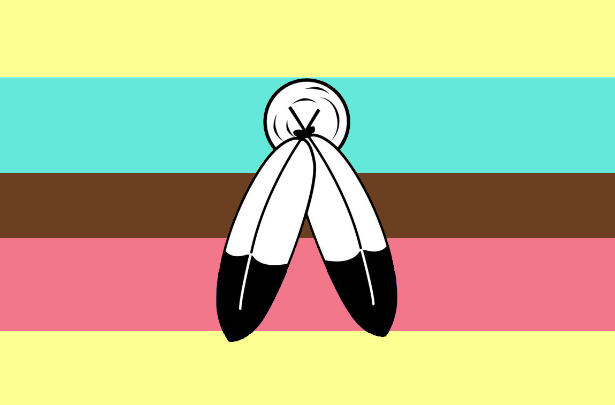
Famous Native
and Indigenous LGBTQ Persons
Osh-Tisch
(Crow) - Tribal Leader
We'Wha (Zuni) - Spiritual Leader, Hunter,
Potter, Weaver
Hastiin Klah (Diné) - Artist, Chanter, Weaver, Healer
Lozen (Apache) - Geronimo's Sister, Medicine Woman,
Military Strategist
Dahteste (Apache) - Scout, Messenger, Mediator
Beth Brant
(Mohawk) - Writer
Tara Gomez
(Chumash) - Winemaker
Sharice
Davids (Ho-Chunk) - Politician, US House of
Representatives from Kansas
Trudie
Jackson (Navajo) - Politician, Community Leader
Barbara May Cameron
(Lakota) - Poet, Writer, Activist
Sean Snyder
(Ute, Apache) - Pow Wow Dancer
Adrian Matthias Stevens
(Ute, Navajo) - Pow Wow Dancer
Susan
Allen (Lakota) - Minnesota State Representative
Yolanda Bonnell (Ojibwe) - Canadian Actor, Playwright
Lori
Campbell (Cree-Métis) - Educator, Politician
What It's Like to Be a
Native Trans Woman on Thanksgiving
Two Spirited Tradition
LGBTQ Indigenous Trailblazers Who are
Making History
Here's What It Means To
Be Two-Spirit According To Native
People
Pride in Pictures: Meet the Two Spirit
Community
Frameline Video: Two Spirit People
Gender Identities Recognized By Cultures
Outside Of The US
Two Spirit Native American Stories
TED Talk: Two Spirit and Gender Fluidity
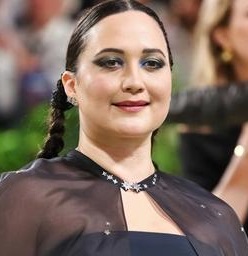
Raven
Davis (Ojibwe) - Artist, Activist, Traditional Cultural
Worker
Blake
Desjarlais (Cree/Metis) - Politician, Canada's First
Two-Spirit Member of Parliament
Jeremy Dutcher (Wolastoqiyik) - Musician, Composer,
Musicologist, Activist
Bretten
Hannam (Mi'kmaq/Ojibwe) - Filmmaker
Shawnee
Kish (Mohawk) - Musician
Richard LaFortune (Yupik) - Activist, Author, Artist
James Makokis (Cree) - Physician
Kent
Monkman (Cree) - Artist
Rebecca Nagle (Cherokee) - Activist, Writer
Harlan Pruden (Cree) - Scholar, Activist
Smokii Sumac (Ktunaxa) - Poet, Activist
Arielle Twist (Cree) - Poet
Ilona Verley (Nlaka'pamux) - Drag Queen, Contestant on
Canada's Drag Race
Storme Webber (Alutiiq and Choctaw) - Artist
Delina White (Ojibwe) - Activist, Artist, Fashion
Designer
Joshua Whitehead (Oji-Cree) - Poet, Novelist
Massey Whiteknife (Cree) - Businessman, Producer,
Entertainer
Lily
Gladstone (Blackfeet) - Actor
Nex
Benedict (Choctaw)
Devery
Jacobs (Mohawk ) - Actor, The Echo, Reservation
Dogs, American Gods
Annie Kaio
(Fa’afafine) - Pageant Model, Miss Samoa Fa’afafine, New
Zealand
LGBTQ History
Includes Indigenous Two-Spirit People
What This Two-Spirit Couple Can Teach Us
About Our Queerness
Lily Gladstone: First
Native American Woman Nominated for Best
Actress
Frameline Video: Two Spirit People
LGBTQ Native Americans: Making the World
a Better Place
Indigenous
Tribes of the United States
LGBTQ Indigenous Trailblazers Who are
Making History
Wikipedia: Two Spirit
Two Spirit Native American Stories
Here's What It Means To Be Two-Spirit
According To Native People
Aikāne: Universal Queer Love Story Rooted
In Native Hawaiian Tradition

Devery Jacobs:
Actor
Devery Jacobs didn't have the option to be in the
closet... and she didn't want it
Devery
Jacobs always knew that she was coming out for more than
just herself. The Reservation Dogs and American Gods
actor has a message for queer Indigenous youth.
The Echo and Reservation Dogs actor was "never fully in
the closet," though she officially came out around the
time she was filming American Gods, in which she played
a bisexual Two Spirit character named Sam Black Crow.
While Jacobs always believed in the importance of being
authentic, it was the impact her role would have on her
community that would inspire her full revelation.
"I was playing a queer character but I also thought it
was important to just be out and as myself. Because that
same year, I had read a study from the Trevor Project
that was talking about queer youth of color, and of all
LGBTQ2S youth of color, Indigenous youth died by suicide
at the highest rate,” Jacobs recently said, as its Grand
Marshall for Pride Month. “For me it didn’t really feel
like an option to be in the closet."
While Jacobs said she was "still figuring this part of
myself out," she knew it was "important for me to be
able to have some visibility for that rural native kid
on a reservation somewhere who feels like they’re
trapped or feels like they can’t come out.”
“That was the turning point. I haven’t looked back
since, and from that point on, I’ve been able to full-throatedly
stand in my queerness and find my place in this
community," Jacobs said.
Jacobs said that while she aims to inspire queer
Indigenous youth, she also wants them to know that
coming out is a deeply personal decision that they
should make on their own terms, and that "just because
you’re out to some people doesn’t mean you need to be
out to everybody. "
"Trust the process and your timing of where you’re at
with everything," she said. "If you do choose to come
out, [know] that there is a community that is waiting
with open arms and is willing to embrace you and ready
to have you step into it."
[Source: Ryan Adamczeski, Advocate Magazine, July 2024]
Devery Jacobs Didn't Have the Option to be in the Closet
Lily Gladstone: First Native American
Woman Nominated for Best Actress
Two-Spirit Heroes Who Paved the Way for Today's Native
LGBTQ Community
Native American LGBTQ Info and Resources
TED Talk: Two Spirit and Gender Fluidity
Explaining Two-Spirit
What This
Two-Spirit
Couple Can Teach
Us About Our
Queerness
Two Spirited Tradition
Celebrate Indigenous
Power With Our Playlist of Queer Artists
Video: What Does Two Spirit Mean?
Pride in Pictures: Meet the Two Spirit
Community
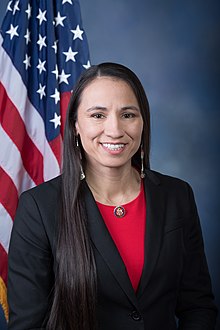
Sharice Davids:
Politician
Sharice
Davids is a Native American lesbian politician and
attorney from Kansas who serves as a democrat in the US
House of Representatives. She is the first openly LGBTQ
Native American elected to the US Congress, the first
openly lesbian person elected to the US Congress from
Kansas, and one of the first two Native American women
elected to Congress, along with Deb Haaland of New
Mexico.
Davids is
an attorney educated at the University of
Missouri–Kansas City (BBA degree) and Cornell Law School
(JD degree).
In the US Congress, she is the co-chair of the LGBTQ
Equality Caucus, the Vice Chair of the Native American
Caucus, the Vice Chair of the New Democrat Coalition,
and a member of the House Pro-Choice Caucus.
Queerty
named Davids one of the Pride50 "trailblazing
individuals who actively ensure society remains moving
towards equality, acceptance and dignity for all queer
people". She was also named to the 2021 Fast Company
Queer 50 list.
She is a
member of the Ho-Chunk nation.
Two-Spirit Heroes Who Paved the Way for
Today's Native LGBTQ Community
Gay Native American Couple Break Barriers with Pow Wow
Dance
Androgyne: Two Spirit
Tradition
Indigenous Tribes of the
United States
LGBTQ History
Includes Indigenous Two-Spirit People
TED Talk: Two Spirit and Gender Fluidity
Here's What It Means To Be Two-Spirit
According To Native People
Two-Spirit/Indigenous LGBTQ Books
Gender Identities Recognized By Cultures Outside Of The
US
Who Are the Two Spirits?
Native Two Spirits
Sean Snyder and
Adrian Matthias Stevens
Meet the Native American couple redefining cultural
norms… Nevada-based dancers Adrian Matthias
Stevens and Sean Synder are blazing a trail in
traditional Native American culture: The out couple are
now regularly performing a “sweetheart’s dance” on the
same pow-wow circuit that they first met on years ago.
Stevens, who is of Northern Ute, Shoshone-Bannock and
San Carlos Apache heritage; and Snyder, who is of
Southern Ute and Navajo heritage, are a Two-Spirit
couple that have been together for seven years. Within
North American Indigenous communities, Two-Spirit refers
to people who possess both masculine and feminine
spirits, but it can also be used to represent LGBTQ
Indigenous people more broadly. “It’s not biological,
it’s spiritual, and it ties back to what I was taught
growing up,” Stevens told Vogue in 2020. “My aunties
recognized me as a Two-Spirit individual way before I
even recognized it.”
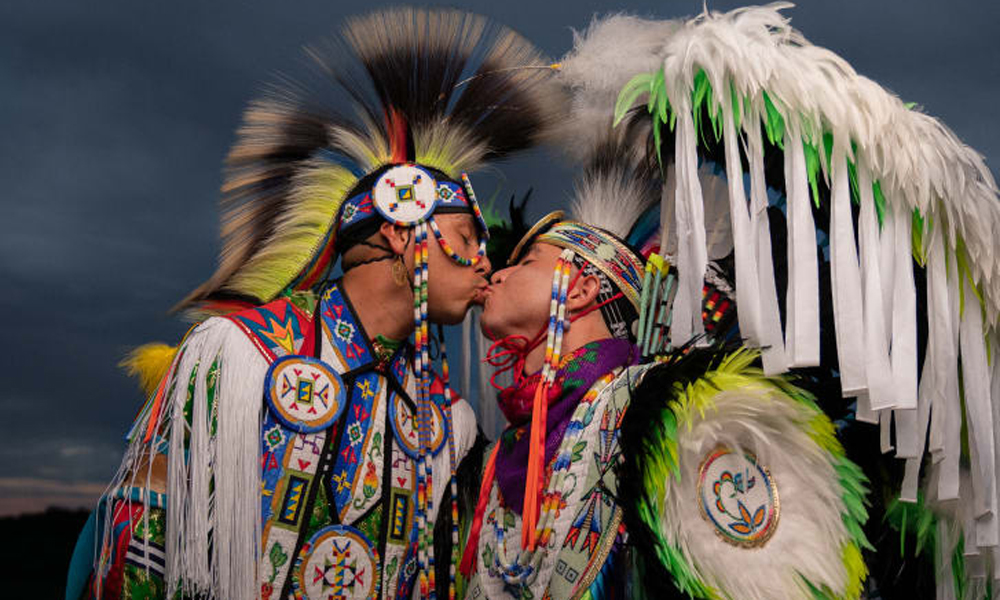
When Stevens and Snyder first met, they were both
dancers on Utah’s powwow circuit. Pow wows are social
gatherings held by many different Native American and
First Nations communities. Contemporary pow wows involve
dancing competitions, singing, socializing, and other
elements. The sweetheart competition, where couples show
off partnered routines in hopes of winning a prize, is a
frequent element of many pow wows, with cash prizes that
can top $10,000. However, it took Stevens and Synder
years to perform a couple routine in the sweetheart
competition. That category was exclusively performed by
male and female dancers until 2018, when they became the
first Two-Spirit pair to do so, after being disqualified
from a dance the year prior. “Because our styles
are so different, we had to find a way to dance
together,” Snyder told Vogue. “And for us being two men,
it was surprisingly difficult. You don’t grow up going
to dances and learning to dance with another same-sex
partner. We had to learn how to lead and how to take
direction.”
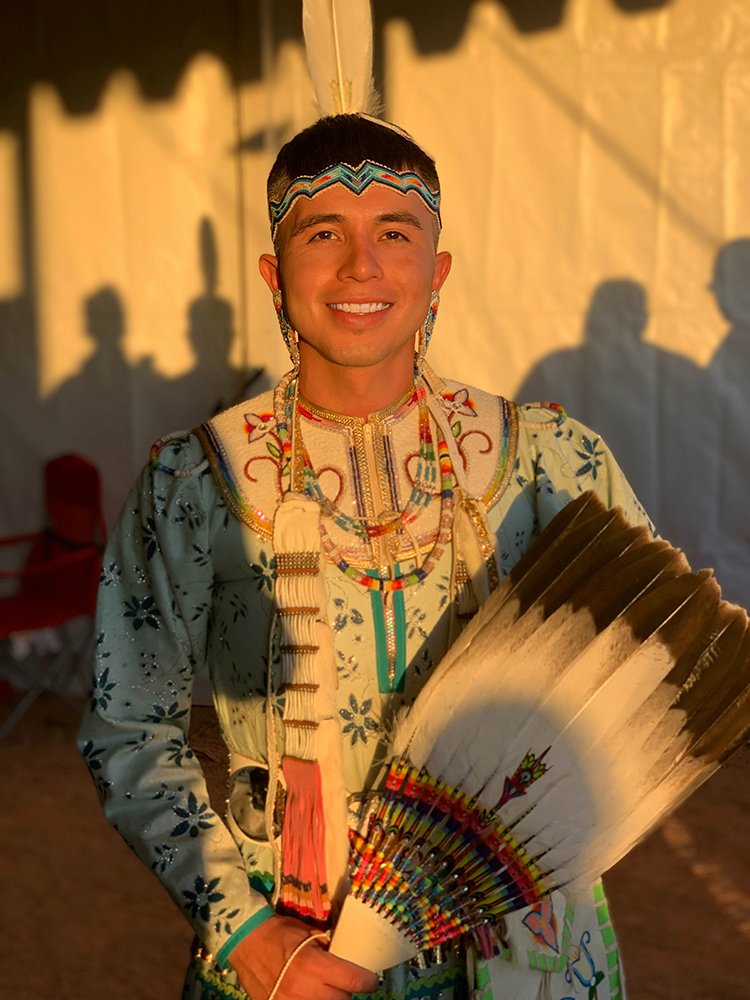
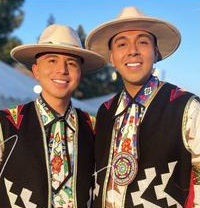
Since
then, their routines and matching regalia (each
embellished with their own handmade beadwork) have
brought them widespread attention. In 2019, a short
documentary telling their story, Sweetheart Dancers, was
shown at the PBS Short Film Festival. "To be here
as a 2Spirit person means being proud of my identity and
how I walk this earth between the masculine and
feminine," Sean said. "It means dancing with
Pride, using my movements to take up space. Using my art
and designs to show the world we are thriving. Using my
voice for our youth and our elders. My peers and the
Two-Spirit community deserve more from our own Sovereign
Nations, to be protected and to have the equal rights as
our Cis/Hetero relations."
Sweetheart Dancers
TED Talk: Two Spirit and Gender Fluidity
Two-Spirit Heroes Who Paved the Way for Today's Native
LGBTQ Community
Who Are the Two Spirits?
Documentary Film: Two
Spirits
What This Two-Spirit Couple Can Teach Us About Our
Queerness
Barbara May Cameron: Legendary Lesbian Native American
Activist
Saving Two Spirit and Indigenous LGBTQ
Youth
Explaining Two-Spirit
Gay Native American Couple Break Barriers with Pow Wow
Dance
Indigenous Tribes of the
United States
LGBTQ History
Includes Indigenous Two-Spirit People
Native Two Spirits
Native American LGBTQ Info and Resources
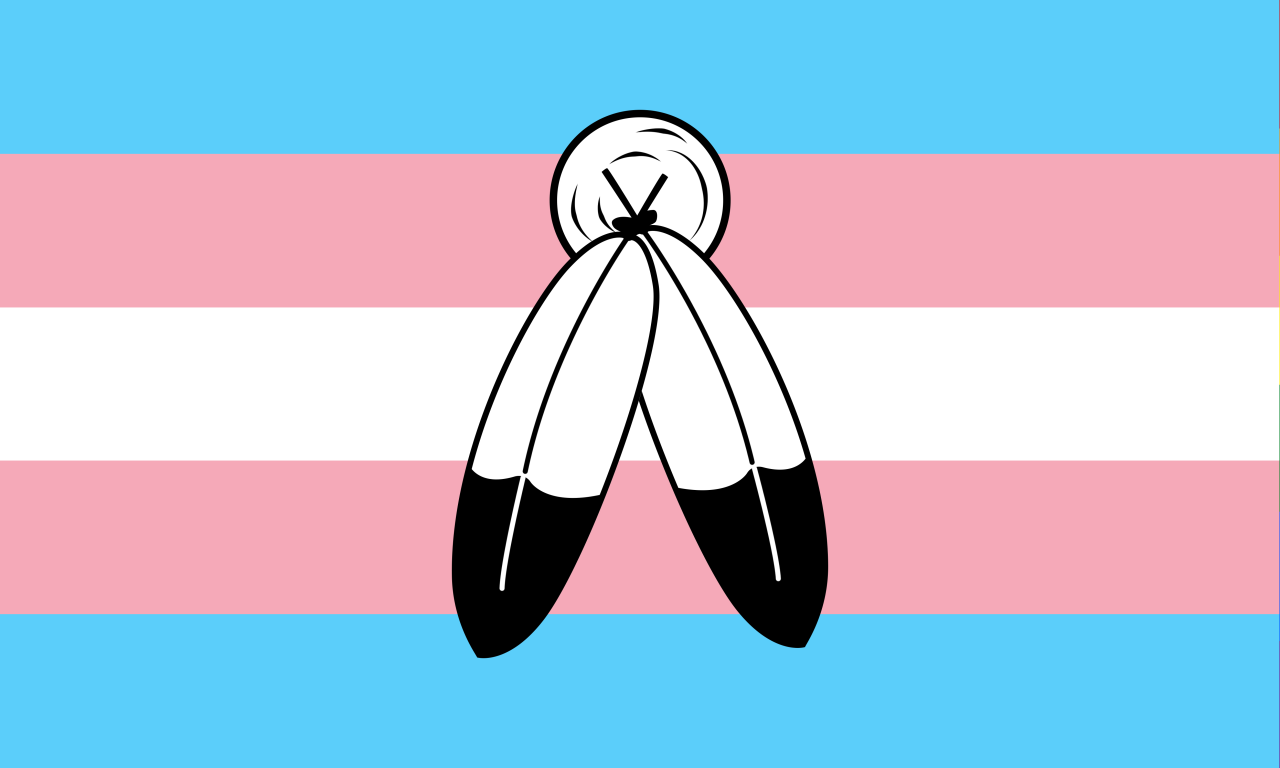
Queer Indigenous
Books
Buffalo Is the New Buffalo by Chelsea Vowel
A Snake Falls to Earth by Darcie Little Badger
A Minor Chorus by Billy-Ray Belcourt
Rabbit Chase by Elizabeth LaPensée and KC Oster
Ask the Brindled by No’u Revilla
Màgòdiz by Gabe Calderón
Making Love with the Land by Joshua Whitehead
The Summer of Bitter and Sweet by Jen Ferguson
Jonny
Appleseed by Joshua Whitehead
The Bone People by Keri Hulme
Sovereign Erotics: Collection of Two-Spirit Literature
by Qwo-Li Driskill
Wyrwood (The Way of Thorn and Thunder) by Daniel Heath
Justice
After the
Snow Melts by Maggie Blackbird
Lesbian Triptych by Jovette Marchessault
Two-Spirit Journey: Autobiography of a Lesbian
Ojibwa-Cree Elder by Ma-Nee Chacaby
Godly Heathens by H.E. Edgmon
Disintegrate/Dissociate by Arielle Twist
Two Princes (When We Were Young) by Maggie Blackbird
Mohawk Trail by Beth Brant
This Wound Is a World by Billy-Ray Belcourt
Fire Song by Adam Garnet Jones
My Woman Card Is Anti-Native and Other Two-Spirit Truths
by Xemiyulu Manibusan Tapepechul
Samoan Queer Lives by Dan Taulapapa McMullin
Tied Up with a Bow by Maggie Blackbird
Daughters of the Deer by Danielle Daniel
Kiss of the Fur Queen by Tomson Highway
The Woman Who Owned the Shadows by Paula Gunn Allen
Living the Spirit: Gay American Indian Anthology by Will
Roscoe
Lily Gladstone: First Native American
Woman Nominated for Best Actress
Two-Spirit Heroes Who Paved the Way for Today's Native
LGBTQ Community
Two-Spirit/Indigenous LGBTQ Books
Here's What It Means To Be Two-Spirit
According To Native People
Dancing to Eagle Spirit Society
Aikāne: Universal Queer Love Story Rooted
In Native Hawaiian Tradition
Mending the Rainbow: Working with Two Spirit Communities
Video: What Does Two Spirit Mean?
Androgyne: Two Spirit Tradition
Barbara May Cameron: Legendary Lesbian Native American
Activist
Tara Gomez:
Winemaker
Congratulations to Santa Ynez Band of Chumash Indians
community member Tara Gomez for recently being
recognized by Wine Enthusiast as one of their Future 40
Tastemakers for 2023!
In
addition to being an award winning winemaker, Tara
serves as an adviser for the James Beard Foundation
Legacy Network Program, a member of the Hue Society, and
on the board of directors for The Vinguard.

Tara Gomez: Award Winning Winemaker
Camins2Dreams
Winery
Tara and her wife, Mireia, are the owners and winemakers
for their family winery, Camins2Dreams in Lompoc,
California.
Tara Gomez is constantly working toward a more inclusive
wine industry. As a Native American of the Chumash
Tribe, Gomez says it’s important for her to uplift other
marginalized groups and contributes to nonprofits such
as Vino de Sueños which assists struggling migrant
agricultural workers. Further, Gomez, who works
alongside wife Mireia Taribó, aims to create a safe
space for the LGBTQ community both within her own
business as well as through contributing to her local
Santa Ynez Valley Pride and The Rainbow House.
Native American LGBTQ Info and Resources
LGBTQ Native Americans: Making the World
a Better Place
Two-Spirit Joy (and Pain) Examined in
New Doc 'Being Thunder'
Wikipedia: Two Spirit
Gender Identities Recognized By Cultures
Outside Of The US
Video: What Does Two Spirit Mean?
Two Spirited Tradition
LGBTQ Indigenous Trailblazers Who are
Making History
Here's What It Means To
Be Two-Spirit According To Native
People
Pride in Pictures: Meet the Two Spirit
Community
Frameline Video: Two Spirit People
Two-Spirit Heroes Who Paved the Way for
Today's Native LGBTQ Community
Two Spirit Native American Stories
TED Talk: Two Spirit and Gender Fluidity
Trudie Jackson:
Leader
Trudie Jackson made history as the first out trans and
two-spirit Native woman to run for president of Navajo
Nation, a Native American territory occupying portions
of Arizona, Utah, and New Mexico.
Currently residing in Albuquerque, Jackson founded the
Southwest American Indian Rainbow Gathering, which is
currently in its eighth year and addresses health
disparities of American Indians that identify as
two-spirit. A current board member for the Transgender
Resource Center of New Mexico, she’s received awards for
her work from the National Native American AIDS
Prevention Center and It Gets Better.

Additionally, Jackson was selected to be part of the
first cohort with the 2018 Tribal Researchers Cancer
Control Fellowship Program under the Portland Area
Indian Health Board, where she will explore public
health research on Native trans women, hormone therapy,
and liver function.
Though Jackson lost the 2018 election, her message still
resonates. “My identity as a candidate gave hope and
inspiration to many young and older Navajo 2SLGBTQ
third, fourth, and fifth gender individuals to embrace
their identity, but most importantly is to exercise
their right to vote in the Navajo Nation primary and
general presidential election to share their voice,
opinion, and ask questions for the betterment of the
Navajo Nation.”
The activist continues to blaze trails, completing a
doctorate degree, making her one of only a few Native
American two-spirit trans women to have done world that
disadvantages them.
Jackson says she acknowledges, the many Indigenous
two-spirit trailblazers who have “paved the way for my
existence in a colonial society, in which we continue to
fight for our existence within the boundaries of our
Sovereign Tribal Nations.”
[Source:
Advocate]
Native American LGBTQ Info and Resources
Wikipedia: Two Spirit
What This Two-Spirit Couple Can Teach Us
About Our Queerness
Celebrate Indigenous
Power With Our Playlist of Queer Artists
Two-Spirit/Indigenous LGBTQ Books
LGBTQ Indigenous Trailblazers Who are
Making History
Video: What Does Two Spirit Mean?
Aikāne: Universal Queer
Love Story Rooted In Native Hawaiian
Tradition
Two Spirited Tradition
Pride in Pictures: Meet the Two Spirit
Community
Frameline Video: Two Spirit People
Two Spirit Native American Stories
Here's What It Means To
Be Two-Spirit According To Native
People
LGBTQ Native Americans: Making the World
a Better Place
TED Talk: Two Spirit and Gender Fluidity
Indigenous Tribes of the
United States
Barbara May Cameron: Legendary Lesbian
Native American Activist
Barbara May Cameron (1954 – 2002) was a
lesbian Native American photographer,
poet, writer, and human rights activist
in the fields of lesbian/gay rights,
women's rights, and Native American
rights. She was a Hunkpapa Lakota from
the Fort Yates band of the Standing Rock
Sioux Tribe in Fort Yates, North Dakota.
She grew up on the Standing Rock Indian
Reservation. Completing her early
education and high schooling on the
reservation, she went on to further her
education in photography and film at the
Institute of American Indian Arts in
Santa Fe, New Mexico. In 1973 Cameron
moved to San Francisco to attend the San
Francisco Art Institute. As a
photographer and movie maker, Cameron
won media and theater arts awards.
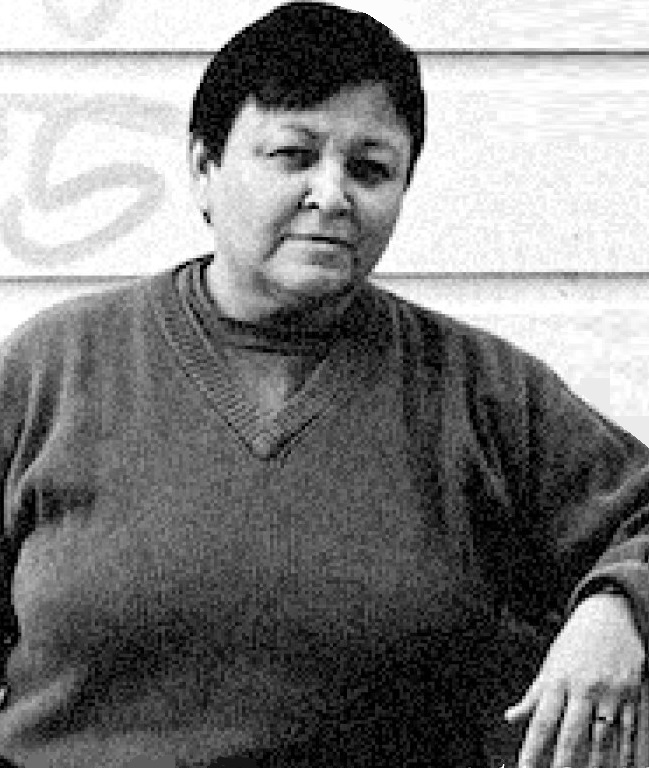
Barbara May Cameron: Biographical Notes
Lesbian Native American Activist Barbara
May Cameron
Barbara May Cameron: Legendary Lesbian
Native American Activist
Cameron co-founded the Gay American
Indians (GAI), in 1975 with Randy Burns,
a Northern Paiute. GAI was the first gay
American Indian liberation organization.
In 1978, Cameron contributed to the
anthology Our Right to Love: a lesbian
resource book. From 1980 to 1985,
Cameron participated in organizing the
Lesbian Gay Freedom Day Parade and
Celebration, and in 1981, she
contributed to This Bridge Called My
Back: Writings by Radical Women of Color,
which was edited by Cherríe Moraga and
Gloria E. Anzaldúa. Her article, Gee,
You Don't Seem Like an Indian from the
Reservation, analyzed topics like
racism and homophobia from both inside
and outside the Native American
community. In 1983 she contributed to
the landmark collection A Gathering
of Spirit: A Collection of Writing and
Art by North American Indian Women,
which included works by twelve Native
lesbians.
In the late 1980s, Cameron was vice
president of the Alice B. Toklas LGBTQ
Democratic Club and co-chair for Lesbian
Agenda for Action. In 1988, she served
as a delegate for Jesse Jackson's
Rainbow Coalition to the Democratic
National Convention. That same year, she
was appointed by Dianne Feinstein, then
San Francisco Mayor, to the Citizens
Committee on Community Development and
the San Francisco Human Rights
Commission. She was appointed by Frank
Jordan, the next mayor, to serve on the
United Nations Commission on the Status
of Women.
She received the Harvey Milk Award for
Community Service in 1992 and the
following year, she was the first
recipient of the Bay Area Career Women
Community Service Award. That same year,
she was a participant in the
International Indigenous AIDS Network as
part of the International Conference on
AIDS. She spent the year 1993 engaged in
AIDS education, traveling to various
Indian reservations throughout the
United States.
Cameron was in a 21-year relationship
with Linda Boyd, with whom she raised a
son, Rhys Boyd-Farrell. Shedied of
natural causes at the age of 47.
Native American LGBTQ Info and Resources
TED Talk: Two Spirit and Gender Fluidity
LGBTQ Indigenous Trailblazers Who are
Making History
Wikipedia: Two Spirit
What It's Like to Be a
Native Trans Woman on Thanksgiving
Video: What Does Two Spirit Mean?
Two Spirited Tradition
LGBTQ Native Americans: Making the World
a Better Place
Indigenous
Tribes of the United States
Pride in Pictures: Meet the Two Spirit
Community
Explaining Two-Spirit
LGBTQ History Includes Indigenous
Two-Spirit People
Frameline Video: Two Spirit People
Two Spirit Native American Stories
Here's What It Means To Be Two-Spirit
According To Native People
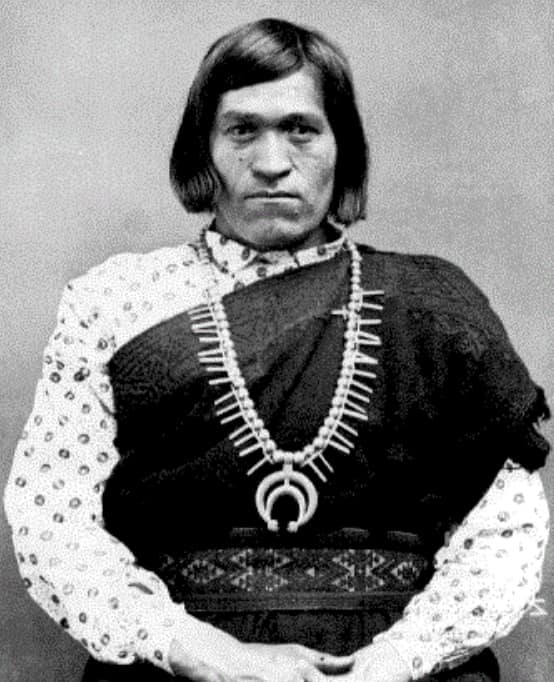
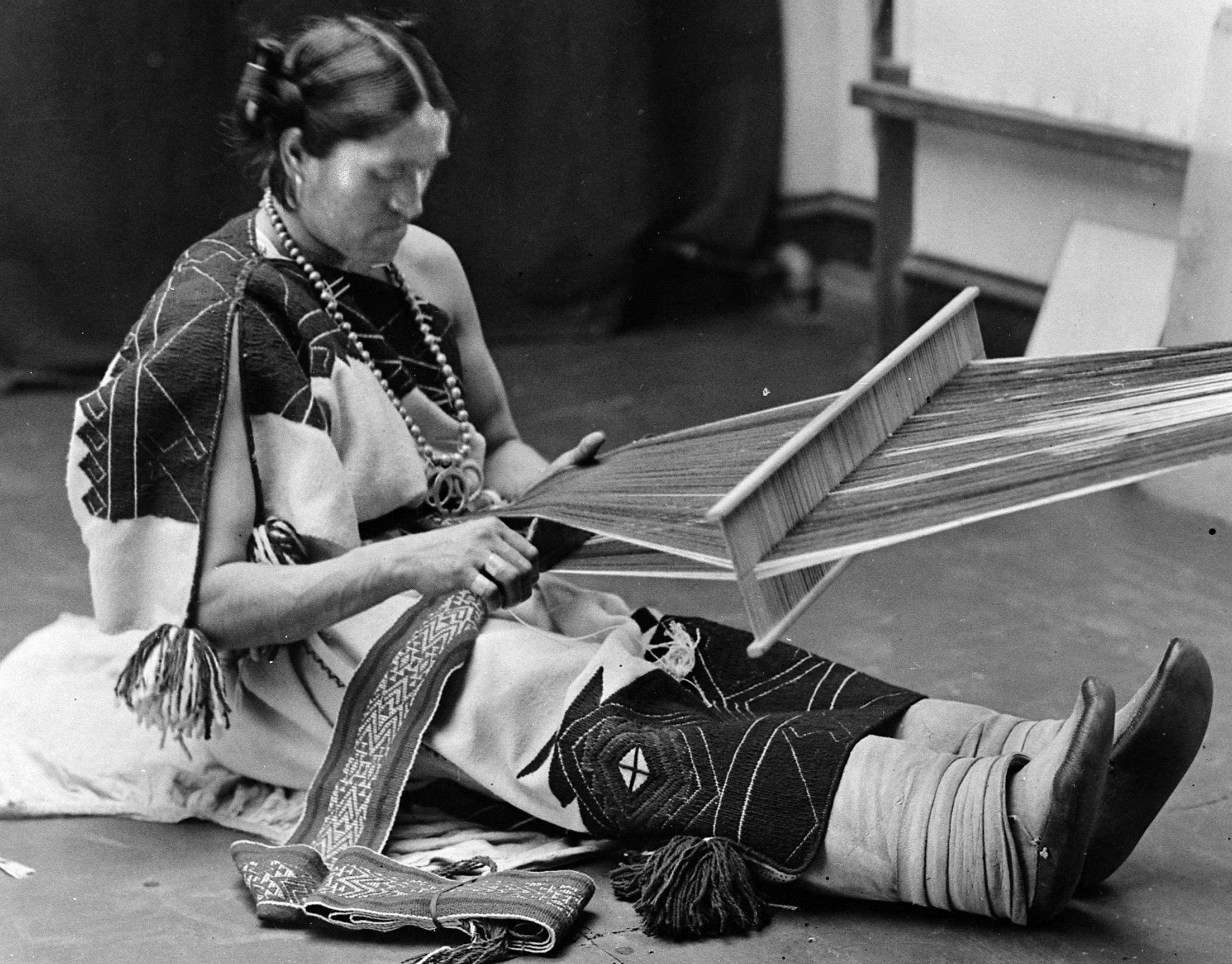
We'Wha: Zuni Tribesman and Indian
Princess
We'Wha (1849-1896) was a Zuni Pueblo.
They were a prominent two-spirit or “Lhamana,” the Zuni
term for a male-bodied person who lived as a woman.
Born into the Zuni tribe of New Mexico, We'Wha was male
presenting at birth, but grew up to embrace their female
identity, what we more generally know now as "Two
Spirit." While presenting as a male figure, they dressed
like a woman and performed female tasks.
We'Wha was
a spiritual leader, a cultural ambassador, and an expert
textile and pottery artist. As a Lhamana, We'Wha
occupied a respected social and spiritual position
within Zuni culture, serving as both craftsman and
cultural ambassador. In 1886, We'Wha traveled to
Washington DC as part of a Zuni delegation and met
President Grover Cleveland, captivating Americans with
dignity, intelligence, and grace.
Throughout
their life, We'Wha blended male and female
characteristics. When they passed away in 1896, they
were buried with male and female clothing and items.
Many of We'Wha's weaving and pottery artifacts were
donated to the Smithsonian.
We'Wha’s
life stands as an enduring example of how gender
diversity has long existed across cultures and
histories, long before Western concepts of LGBTQ
identity took form. Today, We'Wha is celebrated as one
of the earliest recorded Two-Spirit figures to gain
national attention, representing the strength and
sacredness of Indigenous gender traditions that continue
to inspire and empower Native and queer communities
alike.
Native American LGBTQ Info and Resources
LGBTQ Native Americans: Making the World
a Better Place
Two-Spirit Joy (and Pain) Examined in
New Doc 'Being Thunder'
Wikipedia: Two Spirit
Gender Identities Recognized By Cultures
Outside Of The US
Video: What Does Two Spirit Mean?
Two Spirited Tradition
LGBTQ Indigenous Trailblazers Who are
Making History
Here's What It Means To
Be Two-Spirit According To Native
People
Pride in Pictures: Meet the Two Spirit
Community
Frameline Video: Two Spirit People
Two-Spirit Heroes Who Paved the Way for
Today's Native LGBTQ Community
Two Spirit Native American Stories
TED Talk: Two Spirit and Gender Fluidity

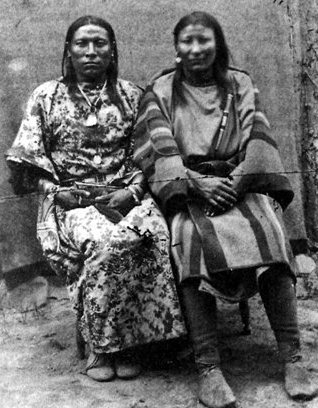
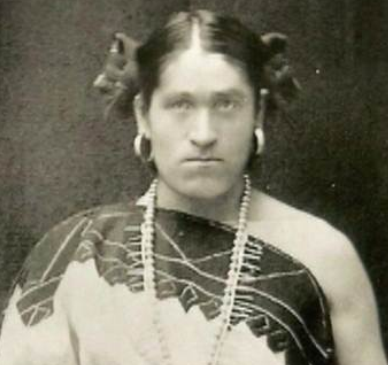
Native
American Names for Two-Spirit People
--Badé / Boté (Crow people)
--Warhameh (Cocopa people)
--Joya (Chumash people)
--Kwiraxame (Maricopa people)
--Ihamana (Zuni people)
--Winkte (Lakota people)
--Nadleeh (Navajo people)
Before the
late twentieth century, the term “berdache” was widely
used by anthropologists as a generic term to indicate
two-spirit individuals. However, this term has become
increasingly outdated and considered offensive. The term
“Two-Spirit” gained widespread popularity in 1990 during
the third annual intertribal Native American/First
Nations gay and lesbian conference in Winnipeg.
"Two-spirited" or "two-spirit" usually indicates a
person whose body simultaneously manifests both a
masculine and a feminine spirit. These individuals were
sometimes viewed in certain tribes as having two spirits
occupying one body. Their dress is usually a mixture of
traditionally male and traditionally female articles.
They have distinct gender and social roles in their
tribes. The term can also be used more abstractly, to
indicate presence of two contrasting human spirits (such
as Warrior and Clan Mother) or two contrasting animal
spirits (which, depending on the culture, might be Eagle
and Coyote).
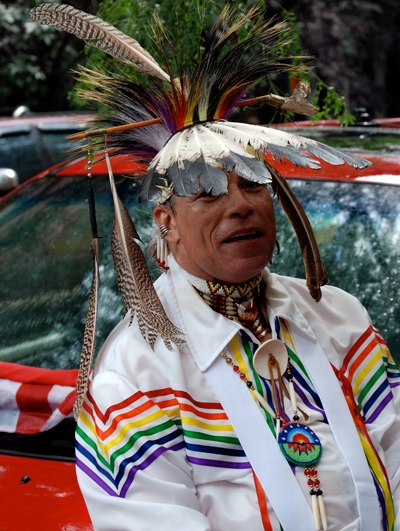 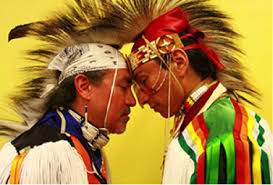
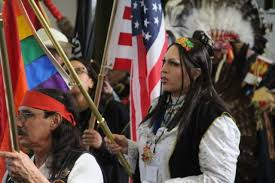
Here's What It Means To Be Two-Spirit According To Native People
Gender Identities Recognized By Cultures Outside Of The
US
Dancing to Eagle Spirit Society
Mending the Rainbow: Working with Two Spirit Communities
Video: What Does Two Spirit Mean?
Aikāne: Universal Queer
Love Story Rooted In Native Hawaiian
Tradition
Androgyne: Two Spirit Tradition
Two-Spirit/Indigenous LGBTQ Books
Barbara May Cameron: Legendary Lesbian Native American
Activist
What It's Like to Be a Native Trans Woman
on Thanksgiving
TED Talk: Two Spirit and Gender Fluidity
Who Are the Two Spirits?
Two-Spirit
is a native tradition that researchers have identified
in some of the earliest discoveries of native artifacts.
Much evidence indicates that native people, prior to
colonization, believed in the existence of cross-gender
roles, the male-female, the female-male, what we now
call the Two-Spirited person. Two-spirits might have
relationships with people of either sex. Female-bodied
two-spirits usually had sexual relations or marriages
with only females.
In Native
American/First Nation culture, before the Europeans came
to the Americas, "two-spirit" referred to an ancient
teaching. Native elders tell of people who were gifted
among all beings because they carried two spirits, that
of male and female. It is told that women engaged in
tribal warfare and married other women, as there were
men who married other men. These individuals were looked
upon as a third and fourth gender in many cases and in
almost all cultures they were honored and revered.
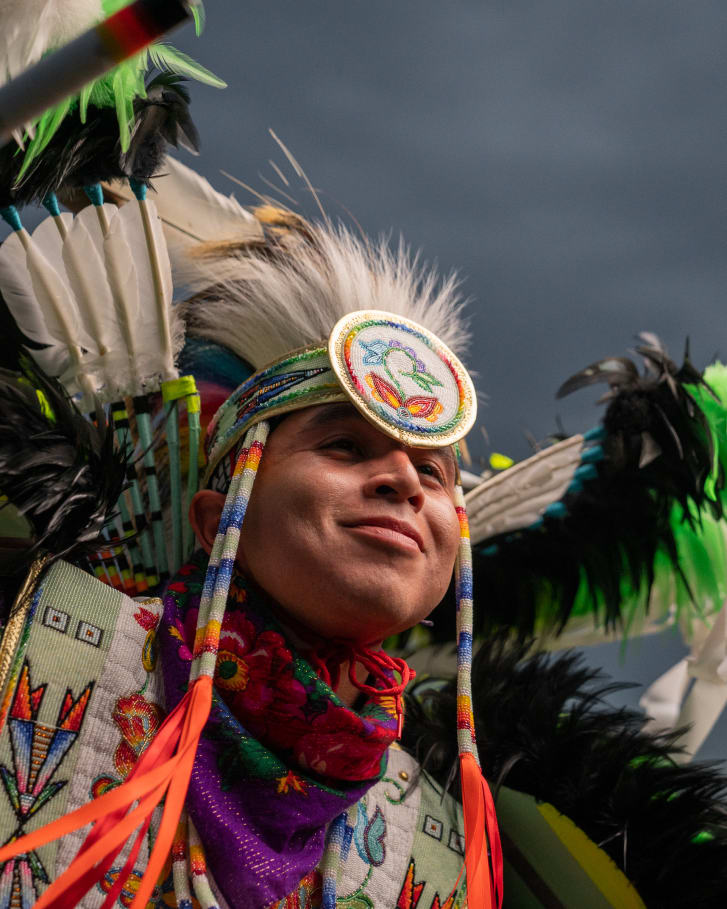

Wikipedia: Two Spirit
Charlie Ballard Video: Being Gay and Native American
Two Spirited Tradition
Frameline Video: Two Spirit People
Celebrate Indigenous Power With Our
Playlist of Queer Artists
Two
Spirit Native American Stories
Two-spirit
people were often the visionaries, the healers, the
medicine people, the nannies of orphans, the care
givers. They were respected as fundamental components of
their ancient culture and societies. In some tribes,
male-bodied two-spirits held specific active roles
which, varying by tribe, may include: healers or
medicine persons, conveyors of oral traditions and
songs, foretellers of the future, conferrers of lucky
names on children or adults, nurses during war
expeditions, potters, matchmakers, makers of feather
regalia for dances, and special role players in the Sun
Dance.
Although two-spirits were both respected and feared in
many tribes, the two-spirit was not beyond reproach or
even being killed for bad deeds. They frequently became
medicine persons and were likely to be suspected of
witchcraft in cases of failed harvest or of death. They
were, like any other medicine person, frequently killed
over these suspicions. At the same time, traditional
Two-Spirit customs and ceremonies have, in many cases,
been replaced with Anglo-Christian ideology and
homophobia.
Native American LGBTQ Info and Resources
TED Talk: Two Spirit and Gender Fluidity
Wikipedia: Two Spirit
What This
Two-Spirit
Couple Can Teach
Us About Our
Queerness
Here's What It Means To
Be Two-Spirit According To Native
People
Video: What Does Two Spirit Mean?
Two Spirited Tradition
Indigenous
Tribes of the United States
Aikāne: Universal Queer
Love Story Rooted In Native Hawaiian
Tradition
Pride in Pictures: Meet the Two Spirit
Community
Frameline Video: Two Spirit People
Two Spirit Native American Stories
Two-Spirit Heroes Who Paved the Way for
Today's Native LGBTQ Community
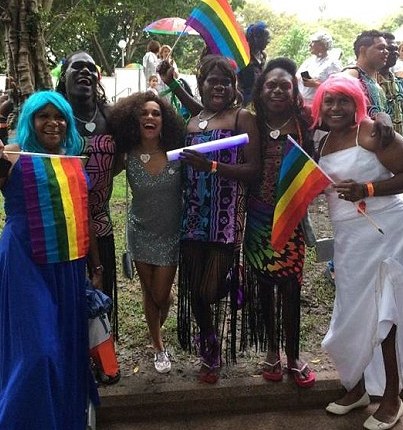
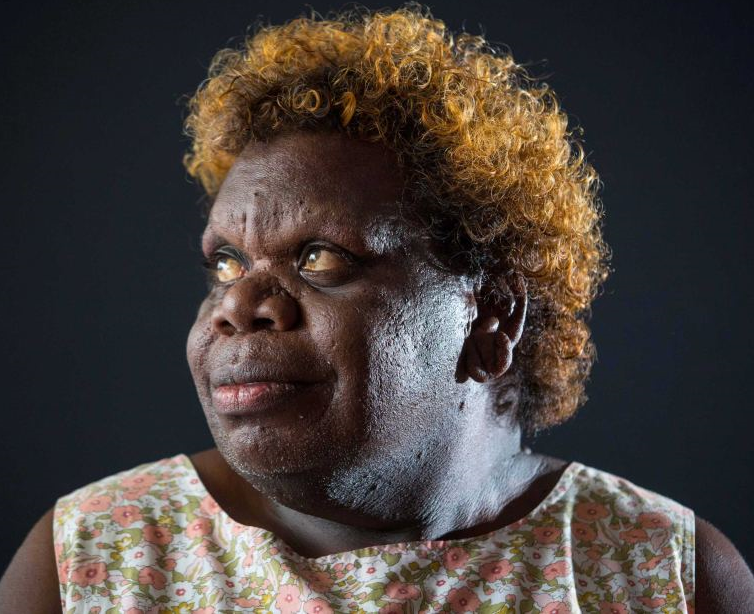

Other Indigenous Two-Spirit People
There are transgender and non-binary people among
native, indigenous and aboriginal populations throughout the
world. These "creative spirits" typically occupy
separate, sometimes isolated, communities.
Australia
- Yimpininni (Sistergirls, Brotherboys)
India -
Hijra,
Khanith
Mexico -
Muxe
Southwestern US - Dineh
Hawaii - Māhū
Polynesia
- Fa'afafine
Indonesia - Calabai,
Calalai
Balkans -
Sworn Virgins
Philippines - Bakla
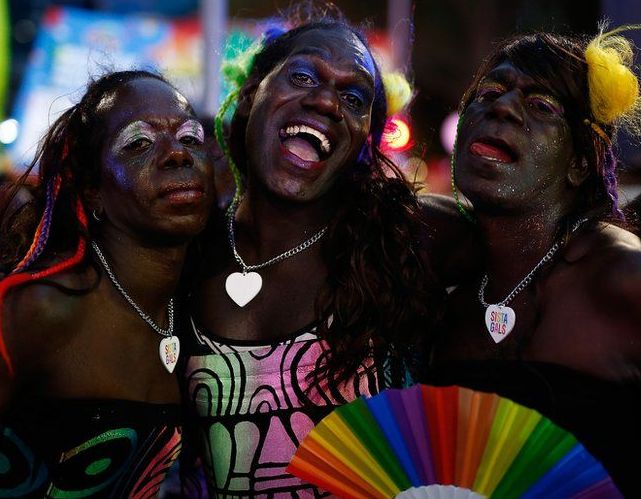
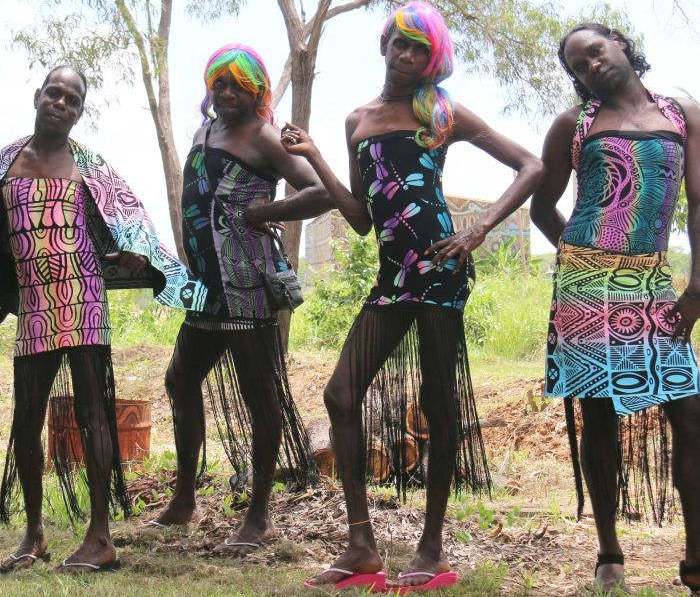
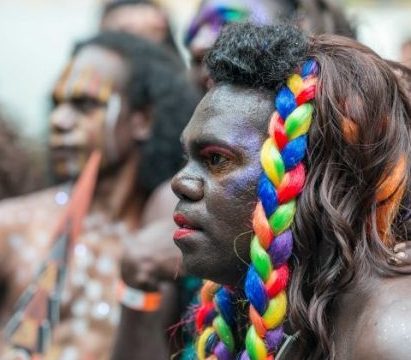
LGBTQ People in Aboriginal Cultures
Gender Identities Recognized By Cultures Outside Of The
US
Queer Indigenous History
New Zealand’s Annie Kaio Crowned Miss Samoa Fa’afafine
Black Rainbow
Sistagals of Australia's Tiwi Islands
Third Gender Movement
Yimpininni: Largest Native Trans Community
Sistergirls and Brotherboys
Khanith Festival
About the Bakla
of the
Philippines
New Zealand’s
Annie Kaio Crowned Miss Samoa Fa’afafine
2023
Beauty Pageant
New Zealand’s Annie Kaio was crowned Miss Samoa
Fa’afafine 2023 at the beauty pageant held last week in
Apia, the capital city of the South Pacific island
nation of Samoa.
Organized by the Samoa Fa’afafine Association, the
pageant has been running since 2006 as both a contest of
creativity and a forum for discussion of fa’afafine
issues. The annual event is a celebration of fa’afafine,
a gender identity unique to Samoa that refers to people
who were assigned male at birth but live as female, or
embrace feminine attributes.
In the week leading up to the pageant, contestants
participated in community events and cultural
activities, including a church service commemorating
World Aids Day, and a rubbish clean up around Apia.
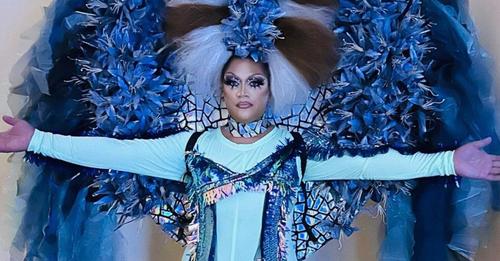
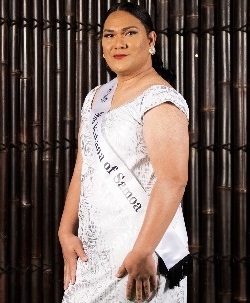
Fa’afafine community advocate Amao Leota Lu has attended
the pageant twice, and said it was an important reminder
of the contributions that fa’afafine brings to society.
“I just get astounded and amazed at the support that
there is for the fa’afafine community. It seems to grow
in abundance, and I think it speaks volumes for the work
that community does,” she said. “It’s not just about
gowns and heels, it’s about bringing our creativity,
being able to celebrate our culture, but also looking
after the wider community such as monetary contributions
that the fa’afafine associations give to old peoples’
homes.”
Melbourne’s Kitana Lemalu dazzled the judges at the
beauty pageant. Lemalu was one of seven fa’afafine
contestants to present a talent performance, creative
wear, swimwear, an evening gown, and a live interview,
in her pursuit of the crown. While Lemalu didn’t place
in the competition, she said the experience was a
“remarkable journey of personal growth and empowerment.
This transformative journey allowed me to not just
celebrate who I am but also to inspire others to embrace
their uniqueness. It’s been a privilege." Lemalu donned
a series of fashionable ensembles, from regal couture
gowns to a ‘Barbie’ themed swimwear costume. For the
talent category, she performed a lip sync number telling
the story of people marginalised for their queerness.
“Annie Kaio’s win is a celebration not just for her but
for our entire community, and I’m eager to witness the
positive impact she’ll bring during her reign,” Lemalu
said.
Native American LGBTQ Info and Resources
Frybread Face and Me:
Navajo Boy Finds His Queerness and His
Culture
LGBTQ Native Americans: Making the World
a Better Place
Two-Spirit Joy (and Pain) Examined in
New Doc 'Being Thunder'
Wikipedia: Two Spirit
Video: What Does Two Spirit Mean?
What It's Like to Be a
Native Trans Woman on Thanksgiving
Two Spirited Tradition
LGBTQ Indigenous Trailblazers Who are
Making History
Here's What It Means To
Be Two-Spirit According To Native
People
Pride in Pictures: Meet the Two Spirit
Community
Frameline Video: Two Spirit People
Two-Spirit Heroes Who Paved the Way for
Today's Native LGBTQ Community
Two Spirit Native American Stories
TED Talk: Two Spirit and Gender Fluidity
Gender Identities Recognized By Cultures
Outside Of The US
HOME
QUEER CAFE
│ LGBTQ Information Network │ Established 2017 |